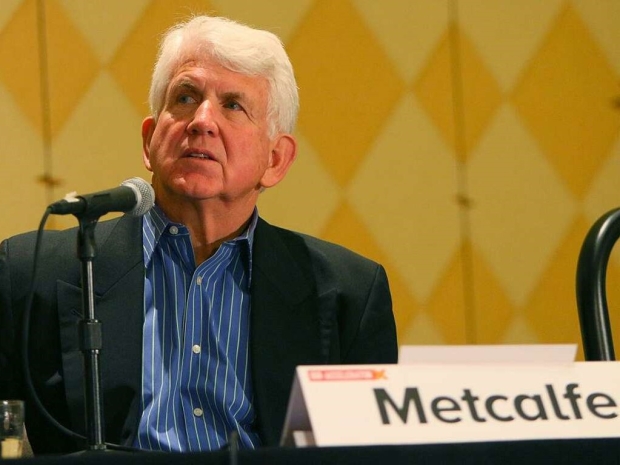Metcalfe played a central role in standardising and commercialising his invention.
When working at Harvard University for graduate school, the US Department of Defense was just ramping up its investment in Arpanet. Metcalfe proposed building an interface connecting the network to Harvard’s mainframe computer, but the university turned him down. He made the same proposal at MIT, where he was hired as a researcher while still a Harvard graduate student.
However, when he presented a thesis describing the work to his dissertation committee in 1972, he failed his defence because the topic wasn’t theoretical enough.
By then Metcalfe had already accepted a job at the Xerox Corporation’s Palo Alto Research Center, or PARC, in California. The lab’s director, Bob Taylor, told him to come anyway and finish his dissertation in Palo Alto. Once there, Metcalfe started building another Arpanet interface for a new PARC computer while searching for a theoretical topic to make Harvard go away.
To be fair to Harvard, at the time networking was as much a theoretical challenge as an engineering one. Telephone networks dealt with this problem in the simplest possible way: a connection between two parties locked the communication channel for the duration of a call, making that channel inaccessible to other users even if it wasn’t being used to its full capacity. This inefficiency isn’t a big problem for phone conversations, which rarely lapse into silence for long. But computers communicate in short bursts, which are often separated by long stretches of dead time.
Drawing on the work of Norm Abramson, which transmitted data in tiny packets, Metcalfe worked out a model to fix the data log jam problems. This gave his dissertation enough theoretical chops to pass muster at Harvard, and he quickly realised he could put it into practice at his new job.
Metcalfe laid out his vision for a local network in a May 1973 memo. In the memo he outlined how computers could connect via some passive medium. He noted that other cables or wireless networks would work just as well in theory and might work better in practice as technology improved.
To avoid emphasizing specific hardware, Metcalfe dubbed his brainchild the Ether Network, later shortened to Ethernet. He was inspired by the hypothetical medium through which 19th-century physicists (wrongly) assumed electromagnetic waves travel. “The term was up for grabs, so we grabbed it,” Metcalfe said.
By November 1973, Metcalfe and his colleagues had their first network up and running. He continued to develop the design further, hoping to expand it beyond Xerox, but executives were slow to commercialise the new technology.
In 1979 left PARC and founded his own company, 3Com, to do what Xerox wouldn’t. Not long after striking out on his own, Metcalfe convinced Xerox, Intel and the now-defunct Digital Equipment Corporation representatives to adopt Ethernet as an open industry standard for local networking. Other companies promoted their technologies, but Ethernet eventually won out due in large part to its simplicity and Metcalfe’s early push for standardisation.




